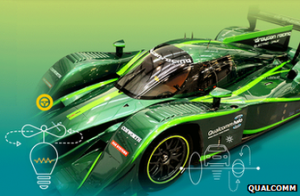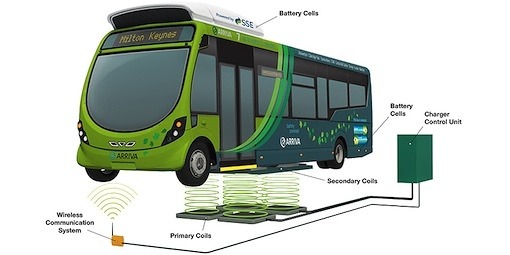An all-electric bus route featuring wireless charging technology has been launched in Milton Keynes. Wireless charging plates installed in the road transfer energy to receiving plates under the bus, recharging its batteries enough to help it complete the town’s 17-hour daily bus service.
The buses will run for five years in a carefully monitored demonstration programme, which will objectively assess their technical and commercial viability.
Eight electric buses will take over a route that even diesel buses find demanding: running 17 hours a day, seven days a week, with each bus covering over 56,000 miles per year. However, the Milton Keynes buses have wireless charging to help them meet the demands of their route.
Instead of plugging into the mains, the new buses will be able to recharge their batteries wirelessly during their working day. This means they can run a continuous service for a whole 17 hours, just like a diesel bus. The concept is simple: wireless charging plates set into the road transfer power directly to receiving plates underneath the bus, using a technique based on the principles of electrical induction. In just 10 minutes, a bus parked over a charging point will replenish two-thirds of the energy consumed on its 15-mile route. Only two wireless charging points are needed to service all eight buses, which will charge in the time scheduled for driver breaks.
With this new technology we ask how long will it be before this can be adapted and implemented into the house hold car? Already two car manufacturers have enabled their cars to accept wireless charging: Nissan LEAF and Chevrolet Volt how long will it be before the others follow in their footsteps.
In September 2013 the FIA international motorsports body announced plans to launch the electric-car competition in 2014 as an alternative to Formula 1. Qualcomm signed up as a sponser and announced its commitment to provide wireless-charging and augmented-reality technology to help the teams taking part and the public watching the races. 
The wireless vehicle-charging tech, Halo, is being developed by the company’s London-based lab – creates an electromagnetic field using a copper pad buried in the ground. This can be picked up by a coil built into a vehicle, which converts it into electricity to power-up a battery.
British Formula E team Drayson Racing Technologies has already tested a customised version of Halo as a way of charging its vehicles when they are stationary.
In time, Qualcomm said, several pads could be built into the city centre roads used by the races to provide “dynamic charging” – the ability for the cars to top up their power on the go, helping them complete the race in quicker time. So isn’t it about time that we looked into whether this is feasible to roll out on our public roads? How long before wireless charging for cars is rolled out and thus making the electric car a more attractive option for everybody?

Leave a Comment
You must be logged in to post a comment.